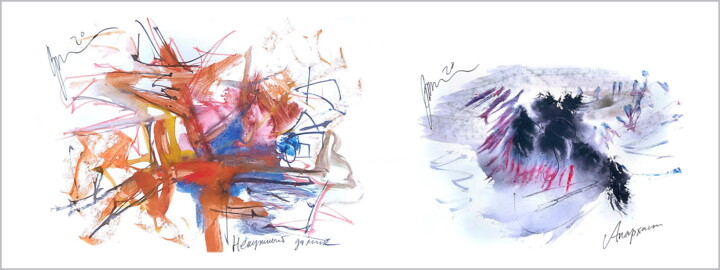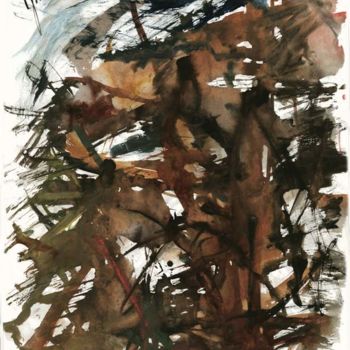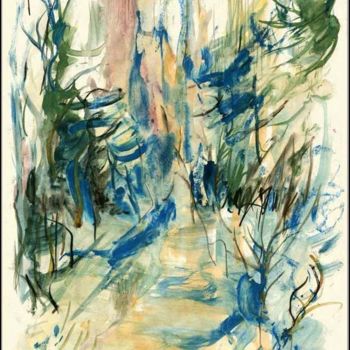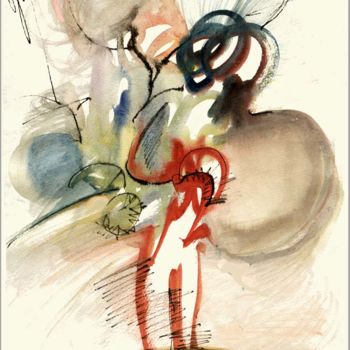похоже, ненужный домик облюбован анархистом Digital Arts by Dima Wilms
This image is available for download with a licence
Sold by Dima Wilms
-
This work is an "Open Edition"
Digital Arts,
Giclée Print / Digital Print
- Dimensions Several sizes available
- Several supports available (Fine art paper, Metal Print, Canvas Print)
- Framing Framing available (Floating Frame + Under Glass, Frame + Under Acrylic Glass)
on dirait que la maison inutile a été choisie par un anarchiste
Про стёкла и окна читал:
Оказывается, уже древние глазури - это стекло, т.е. оно было известно с древних времён и, например, в Риме достигли больших успехов в его производстве (для которого нужны закрытые печи с 2000 градусов - открытый огонь такого не даст). Но его всегда использовали для украшений и посуды (аптечных склянок, вазочек...), потому что оно всегда было мутным из-за недостаточной чистоты процесса и материалов. Легче было сделать цветное стекло - отсюда распространение всех этих красивейших витражей. Потом большую роль сыграла Венеция (тамошние евреи?!) Они захотели стать монополистами самых передовых технологий в этом производстве, чтобы поддерживать конские цены на свою продукцию. Стали производить зеркала для баб по цене буквально на вес золота (знакомые западные манеры!) И долгое время эта "стратегия" работала - пока, наконец, французики не подкупили одного из мастеров...
I read about glass and windows:
It turns out that ancient glazes - glass, i.e. it has been known since ancient times and, for example, in Rome they achieved great success in its production (which requires closed ovens with 2000 degrees - an open fire will not do this). But it was always used for decorations and dishes (pharmacy bottles, vases...), because it was always cloudy due to the lack of purity of the process and materials. It was easier to make colored glass - hence the proliferation of all these beautiful stained glass windows. Then Venice played a big role (the Jews there?!) They wanted to become a monopolist of the most advanced technologies in this production in order to maintain high prices for their products. They began to produce mirrors for women at a price literally worth their weight in gold (familiar Western manners!) And for a long time this “strategy” worked - until, finally, the French bribed one of the masters...
А так в окнах, помимо мутного стекла, использовали то слюду, то бычьи пузыри, то рога(?! Видимо, рога слоеные...) И бумагу вставляли! Ну, и всегда были ставни снаружи, а то и деревянные заслонки внутри. Были и вовсе просто проемы! Ведь цивилизация развивалась на югах... И всегда и везде люди немного времени просиживали в домах - надо было работать! Поэтому окошки были малюсенькие. Или вовсе какие-то прорези. А если по черному топили, то просто сверху имелась дыра... Но на наших северах полгода дома кукуешь - и женщинам надо было прясть и вязать при хоть каком-то, но свете (при лучине?!) Оконное листовое стекло научились производить очень поздно (когда точно, и не скажу!) и его сначала хватало лишь для дворцов, поэтому всегда в деле были кусочки, мозаики... (Зато мутное стекло чем хорошо? - никаких занавесок не нужно. А уж витражи сами как занавески...)
And so in the windows, in addition to cloudy glass, they used either mica, or bull's bubbles, or horns (?! Apparently, the horns were puff...) And they inserted paper! Well, there were always shutters outside, and even wooden shutters inside. were just window openings! After all, civilization developed in the south... And always and everywhere people spent a little time in their houses - they had to work! That's why the windows were tiny. Or some kind of slits at all. And if they heating in black, then there was simply a hole at the top... But in our north you are stuck at home for six months - and women had to spin and knit in at least some kind of light (with a torch?!) They learned to produce window sheet glass very late (I won’t say exactly when!) and at first it was only enough for palaces, so there were always pieces and mosaics in action... (But what’s good about cloudy glass? - no curtains are needed. And stained glass windows themselves are like curtains... )
I don't like exhibitions - they are too soulless, formal and hypocritical, and require worries and troubles.
Je n'aime pas les expositions - elles sont trop sans âme, formelles et hypocrites, et nécessitent des soucis et des ennuis.
I don't like money in art
I don't like money in art, a career in art is certain death for an artist
Je n'aime pas l' argent dans l'art, une carrière dans l'art est une mort certaine pour un artiste
Painting is for yourself, for the soul. Let others figure it out for themselves. I am unable to create when alien, unpleasant people are looking at me
Painting is for yourself, for the soul. And let others figure it out for themselves. I am not able to create when alien, unpleasant people look at me
La peinture est pour soi, pour l'âme. Et laissez les autres le comprendre par eux-mêmes. Je ne suis pas capable de créer quand des gens étrangers et désagréables me regardent
I don't like bright nonsense
Je n'aime pas les absurdités vives
I don't like sugary rot
Je n'aime pas la pourriture sucrée< br />
Art is not bags of sugar and butter
L'art n'est pas des sacs de sucre et de beurre
Art is not deconstruction
Art is not deconstruction
L'art n'est pas une déconstruction
Art is life , geometry is death
Art is life, geometry is death
L'art est la vie, la géométrie est la mort
The most beautiful thing is life, not art.
The most beautiful thing is life, not art.
Le plus beau est la vie, pas l'art.
We are dead if we need artificial beauty
We are dead if we need artificial beauty
Nous sommes morts si nous avons besoin de beauté artificielle
I am a punk and an experimenter, but a humanist and not a lover of geometry
Je suis un punk et un expérimentateur, mais un humaniste et pas un amoureux de la géométrie
-
Nationality:
RUSSIA

- Date of birth : 1964
- Artistic domains:
- Groups: Russian Contemporary Artists








